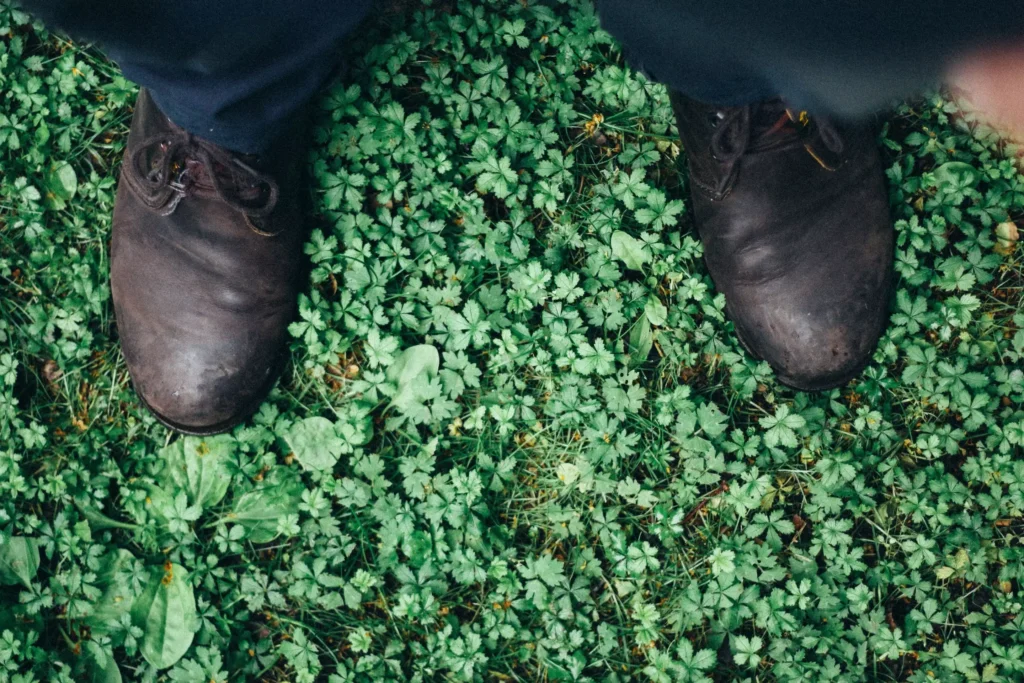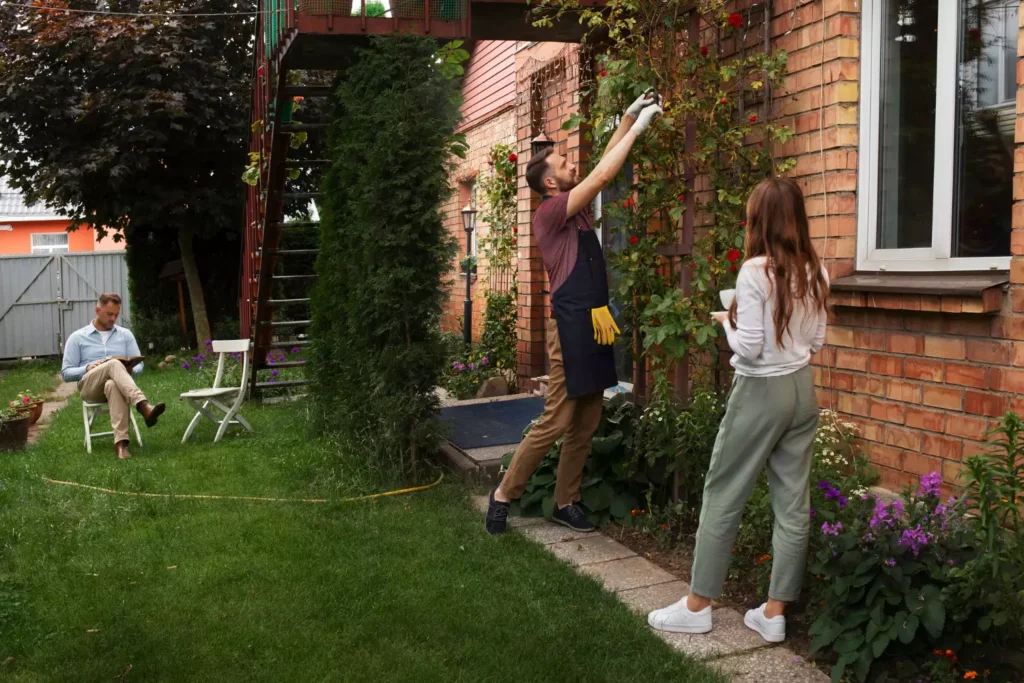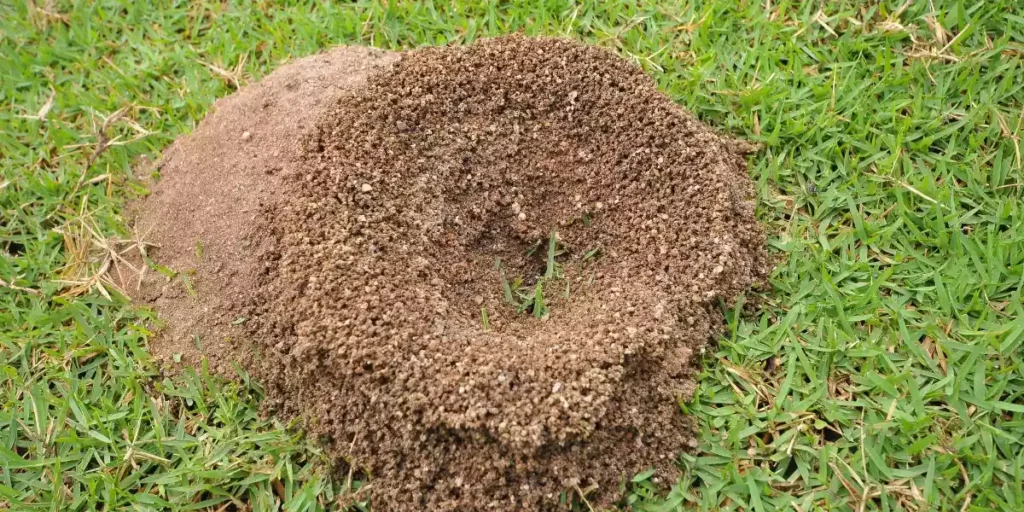Some of us have pine trees growing practically under our noses. Every year they shed a considerable amount of needles. So why not use them for compost? Whether pine needles are a good addition to compost or a harmful addition, you’ll find out by reading on.
You can confidently add pine needles and branches to your compost, but keep in mind that the needles themselves will take longer to decompose, especially the branches. Pine needles have some water resistance and are tough, and it takes a long time to compost anything woody. It’s a good idea to spread the pine needles evenly, rather than adding them all at once.
Many gardeners and composters believe that it is not worthwhile to compost pine needles because they take too long to decompose, are too acidic and allegedly have no nutritional value for plants.

While it is true that pine needles do not have much nutritional value for plants, they are loaded with the nutrient needed for composting – carbon. Composting organisms need a balanced diet of carbon and nitrogen. Carbon-rich materials, called “brown materials,” include straw, dried leaves and pine needles. Nitrogen-rich materials, known as “green” materials, include coffee grounds, vegetable scraps and manure.
In compost heaps, these ingredients are combined: two parts brown to one part green. In addition, composting organisms need moisture and oxygen. Basically, compost should be as moist as a wet sponge. Oxygen is provided by aerating the pile and by turning it to expose more compost to the air. It has also been proven that pine needle compost has a Ph of 6.5, which most people consider neutral.
Good to know: You can also compost spruce needles, cones and twigs without worry. The same rule also applies to all other conifers, such as fir, larch or even juniper.
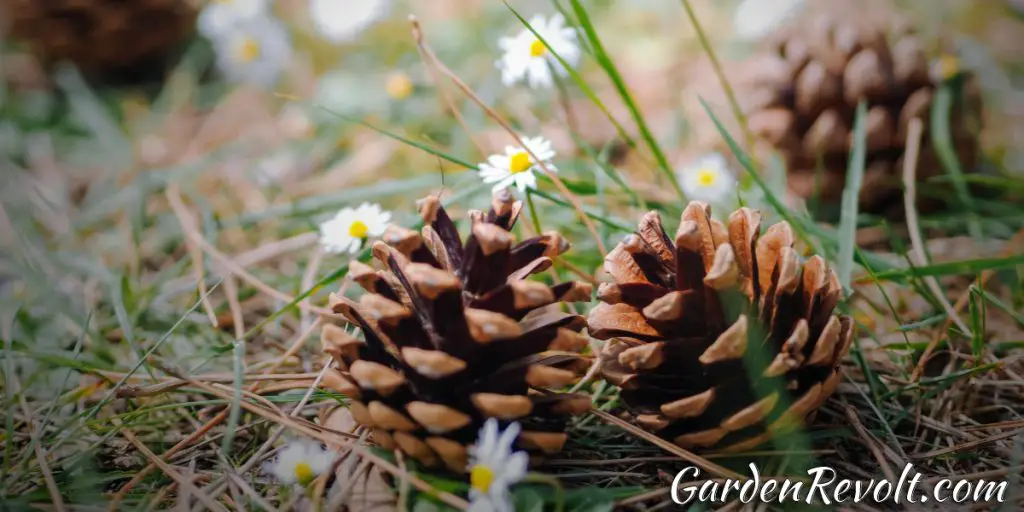
What are the advantages of adding pine needles?
Pine needles will add valuable nutrients to the compost, as well as give it more structure. The needles hold their shape and do not decompose quickly, and this serves to aerate the compost, allowing oxygen to flow through it more efficiently.
This is beneficial to any compost pile, as more airflow means more activity from the right bacteria, which in turn heats up the compost pile.
Compacted compost bins can become anaerobic, and that means a nasty stench, because the wrong kind of bacteria have started to multiply and release methane and other greenhouse gases.
Composting pine needles improves the structure of the compost pile and prevents it from clumping so easily. Pine branches will do the same, keeping the pile open and air moving.
As they decompose, like all organic waste, they will release nutrients, enriching the compost and making it better for plants. They are a valuable source of nutrients and if you have a pine tree, there is no reason to neglect the resources they offer.
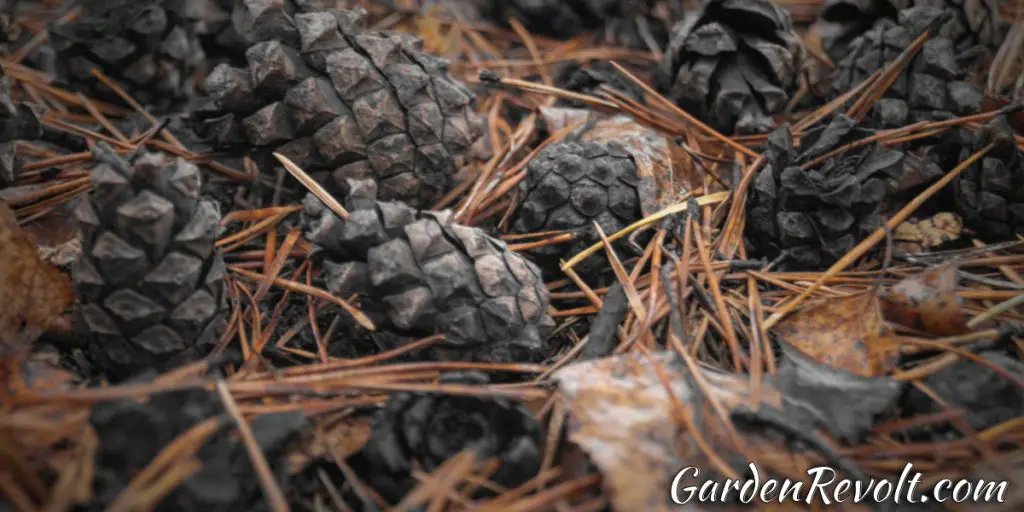
How do you add pine needles to compost?
If you add pine needles to your compost pile, don’t dump the whole pile on top. This will highlight all the worst aspects of pine needles and ignore all the benefits they can offer.
This may seem like the easiest solution, even if it’s not the best. Often, when you collect pine needles, there are a lot of them at once. Sometimes it’s tempting to just throw them on the compost.
They will get compacted, and because, as I mentioned earlier, they have a waxy coating, so they won’t decompose quickly.
As a result, a pile of stagnant material will form in the compost.
Second, because they inhibit the growth of microorganisms, they will decompose even more slowly than other materials. Their water absorption-blocking properties will exacerbate this problem.
Instead, you should mix the needles with whatever you put in the pile. This way you will reap the benefits of better aeration. You can store a sack, bucket or other container with a supply of needles somewhere near the compost. Add a small amount of them every time you throw other waste into it.
This will keep the ratio in balance and distribute the needles throughout the compost.
You can also mix it all at once with a garden fork. This will be far better than applying a thick layer of needles and stopping decomposition for a long time.
Either way, you should flip the compost regularly. If this is part of your routine – you don’t have to worry about poor decomposition of pine needles.

Are there any risks associated with adding pine needles?
Some people do not add pine needles to their compost pile because they are acidic. In fact, pine needles are often used to make erosive compost, which has a low pH value. However, you don’t really need to worry too much about this.
Although pine needles have an acidic reaction, their pH tends to neutralize fairly quickly once they start composting. They do not maintain their acidity and will not make your compost pile particularly acidic unless you add them in very large quantities.
The compost should have a neutral or alkaline reaction, even if you add pine needles to it. It is worth noting that the acidity of pine needles can slow down the growth of microorganisms. This is somewhat of a problem because microorganisms are needed for the compost to function. If you inhibit their growth too much, the compost can slow down or stop.
However, this only happens if you add a lot of pine needles; if you add a lot of other organic matter, this should not be a problem. The important thing about adding pine needles is that they take quite a long time to decompose, and while I said this is an advantage, it is also a disadvantage.
If you add too many pine needles to your compost, you may find that the pile is ready, but the needles will still be in it. In principle, however, this is not too much of a problem. You can simply add the compost with these needles to whatever you are using it for, and they will still slowly decompose. This may not work too well for seedlings and sensitive plants, but if you’re mulching large trees or shrubs, I don’t see the slightest hindrance to it.
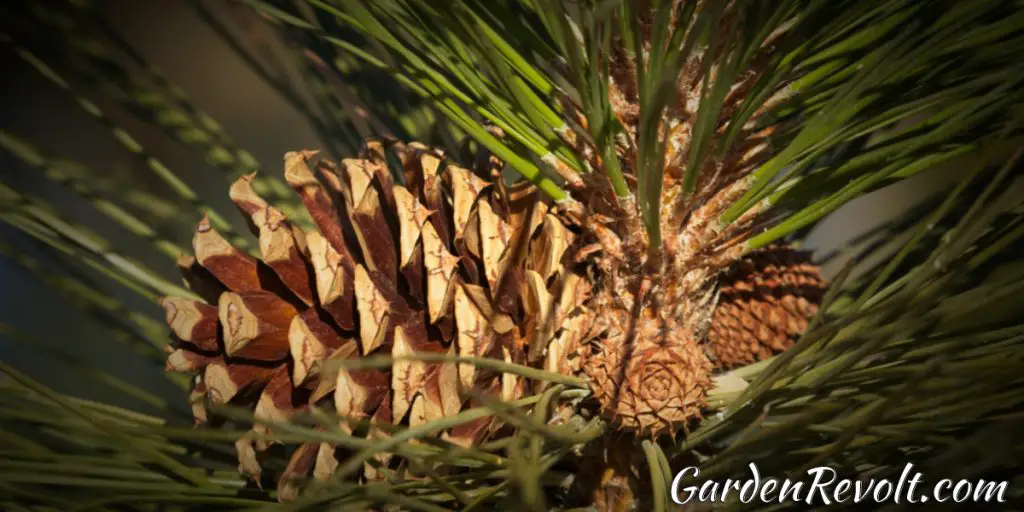
Why do pine needles decompose slowly?
There are a few reasons why pine needles decompose slowly. The needles are covered with a waxy coating that protects them from fungi and bacteria. These are needed to start the decomposition process, but have difficulty getting through this coating.
This coating also protects the pine needles from saturation, and since water is a key part of composting, it further slows down the process. Needles don’t soak up water like other organic waste because they repel water.
Also note that the pH of pine needles can inhibit microorganisms. This slows down the composting process – both the needles and the surrounding material. It won’t stop decomposition, but it will make it go slower.
Branches from pine trees also decompose very slowly, but this is because they are woody and hard. Like any large, solid piece of organic waste you add to a compost pile, pine branches can withstand the composting process for years. I’m serious.
True decomposition doesn’t occur until the wood begins to rot and soften enough for worms and other organisms to eat it. Depending on the size of the branches, this can take a very long time.
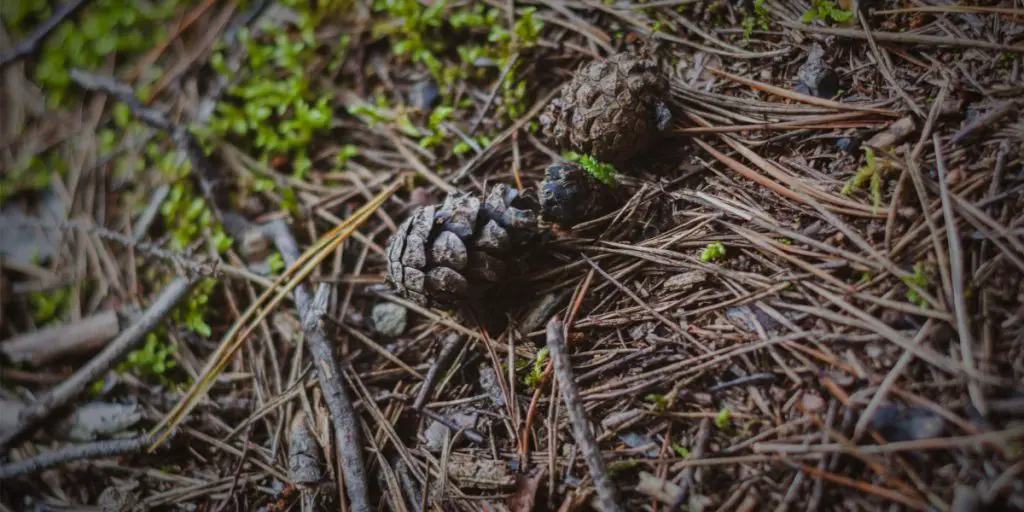
How to make pine needles decompose faster in a compost?
If you are annoyed by the fact that pine needles take a long time to decompose, try using only those that have already aged and turned brown.
Alternatively, if you have the desire and time to play, use a hammer or pestle to crush the needles or cut them at least in half – this will definitely speed up their decay. A damaged coating means they will start soaking up water practically immediately.
It’s also a good idea to use a lawn mower. If you have the opportunity, you can run over the needles and pull them into the basket of your lawn mower. By the way, they will be chopped to some extent, saving you unnecessary work if you were to do it with your own hands.
Since pine needles are resistant to composting, it is helpful to use “hot” composting techniques. This means using hot green ingredients with high nitrogen content, such as cereals, manure, coffee grounds or blood meal. Pre-mixing pine straw with hot greens will help speed up the process.
This technique can generate heat between 50 and 65 degrees Celsius. Frequent flipping will help maintain the higher temperature. It takes about two months of hot composting to decompose pine needles.
During the first few weeks, the green materials will decompose, but the pine straw will remain intact. Since pine needles still have a lot of carbon, adding more greens will keep the temperature of the pile high without making it anaerobic.
After 2-3 months, let the pile settle so that the bacteria can finish their work and the pile cools down. If the worms have access to the compost during this time, they will continue to decompose both pine needles and other organic matter. It will then be necessary to strain the compost to remove all needles, sticks and other debris.
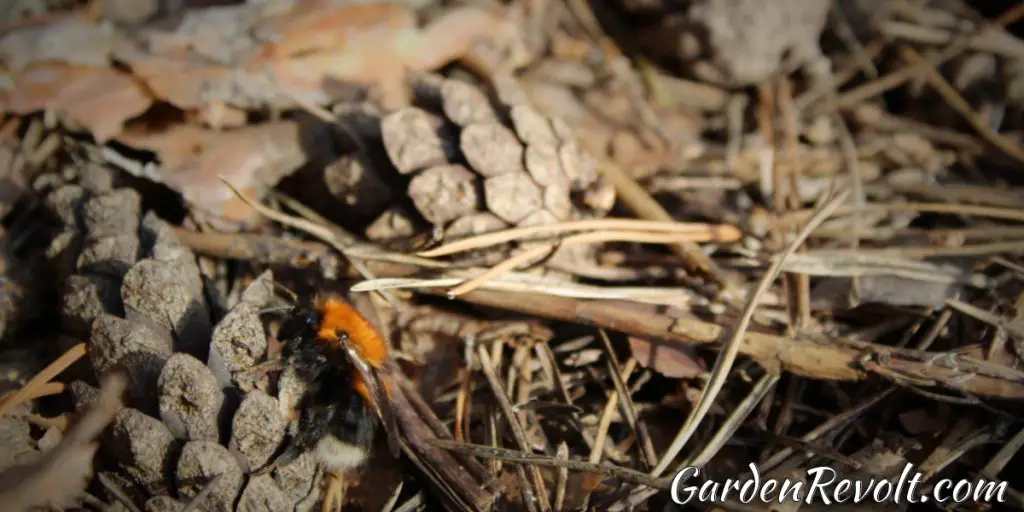
Can you compost pine cones?
Pine cones take even longer to decompose than needles, but you can still add them in small amounts to hot or cold composts. However, they are also an excellent source of carbon for compost.
Granted, they’re great as mulch because they decompose slowly, but in a compost pile it’s a good idea to speed up the process. Chop the cones into smaller pieces. The smaller, the better. Use a shovel, shredder or run them over with a lawn tractor before throwing them into the compost.
How should pine branches be added to compost?
You can add pine branches to your compost as long as they are broken or shredded beforehand. Depending on how quickly you need the compost. If you have a lot of time – the branches just need to be broken. If compost is needed, the branches should be shredded.
One option is to use a chipper, into which you can put the branches to break them into very small pieces.
The best way to do this is to use a chipper – the shredded branches will soak up moisture much faster, begin to rot and soften enough to become compost.
Another option is to try chopping them into pieces yourself. This isn’t the quickest solution, especially if you have a lot of branches to process, but it may be the only option if you don’t have access to a chipper.
If you don’t want to put in the extra work, you can simply add the branches as is. But be prepared that they won’t start to decompose for a long time yet.
You can also pull branches out of the compost every time you pick up material from it. Just don’t forget to put them back in – preferably at the bottom of the pile. They will eventually break down.

